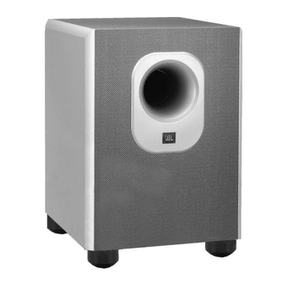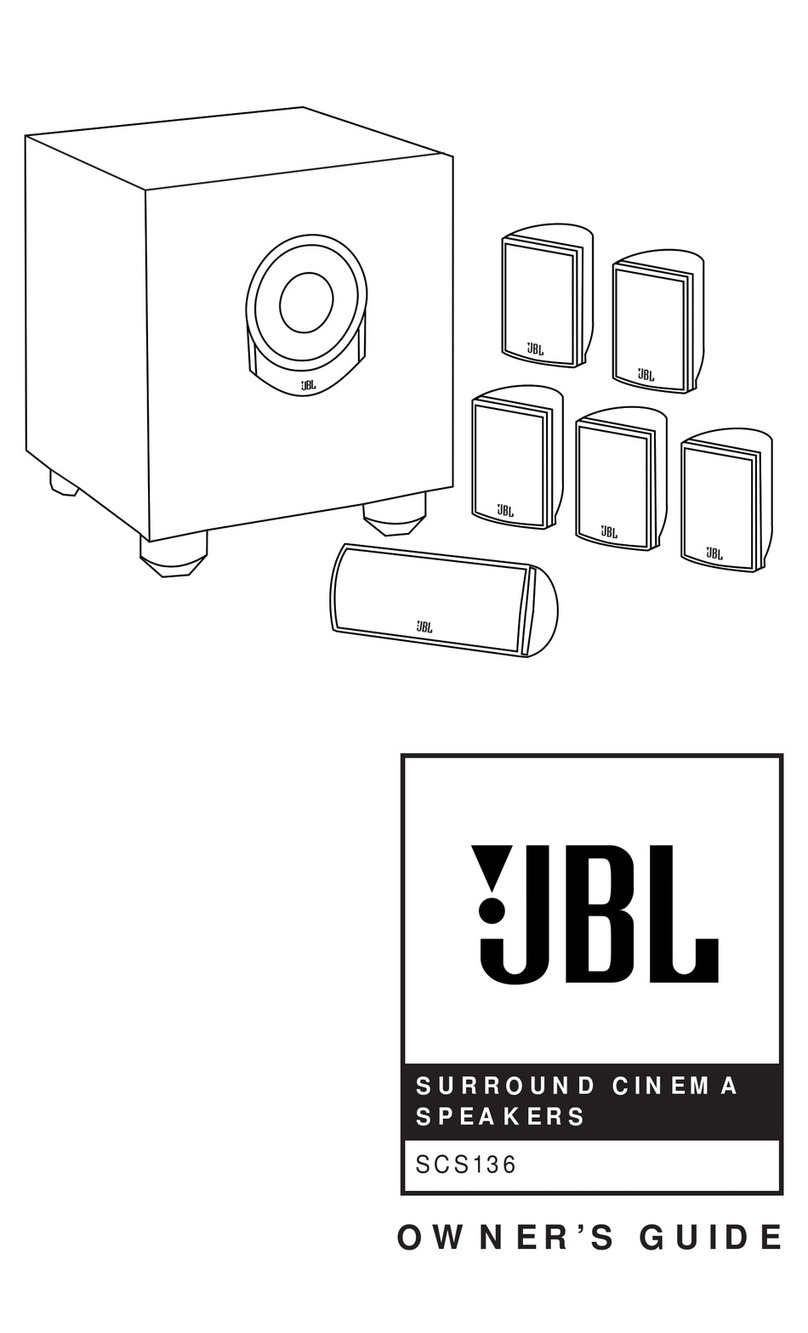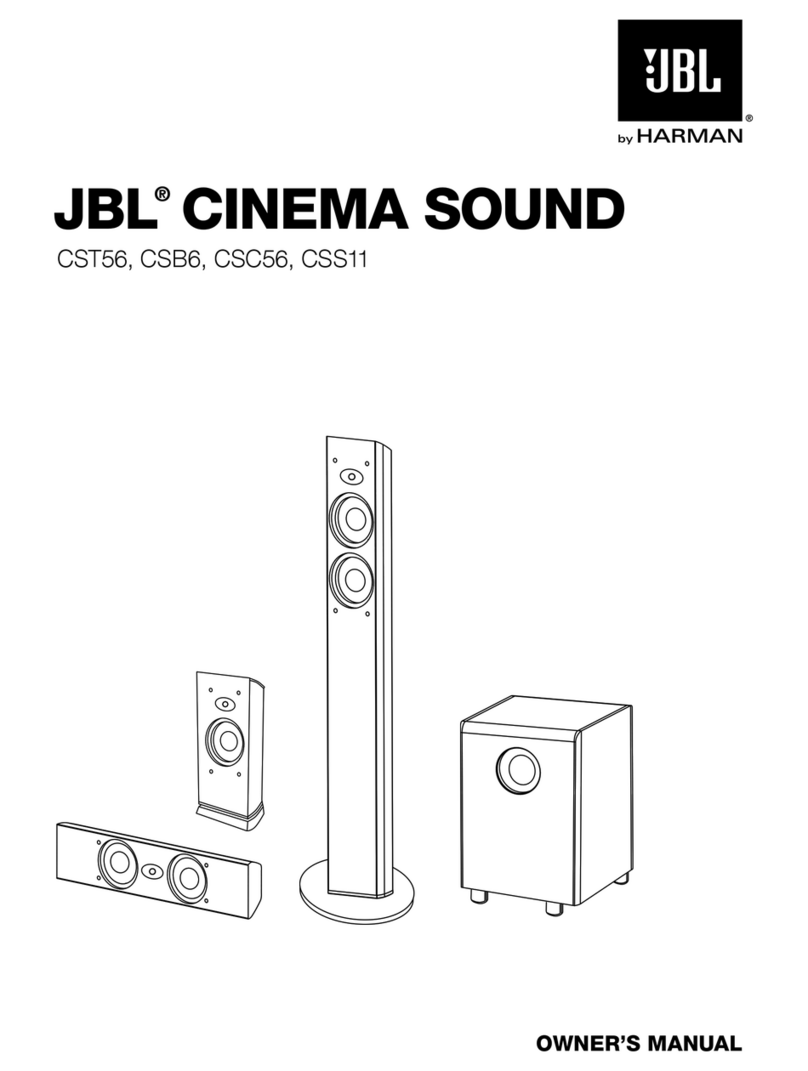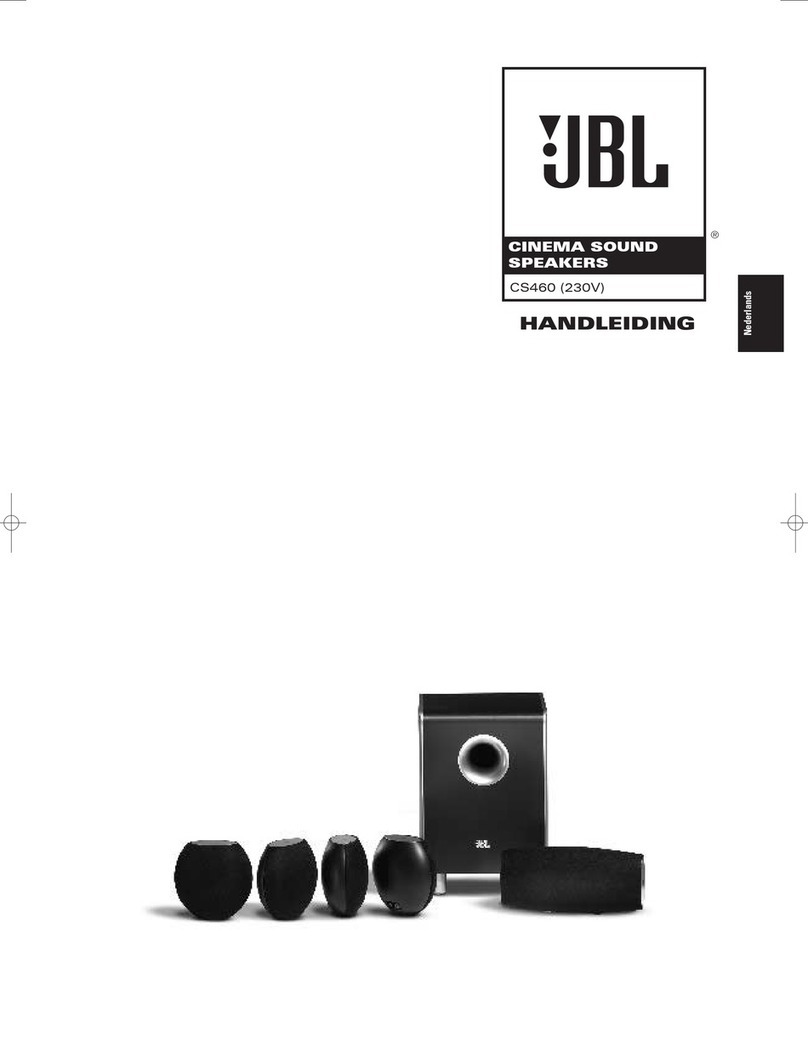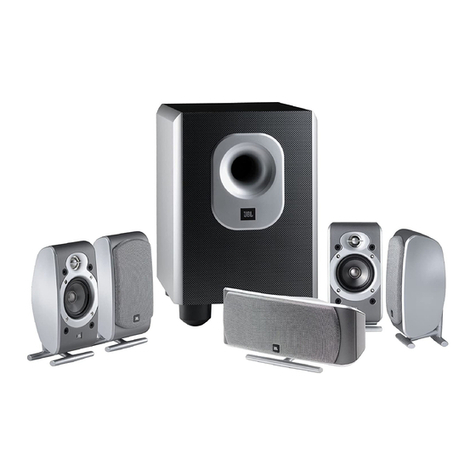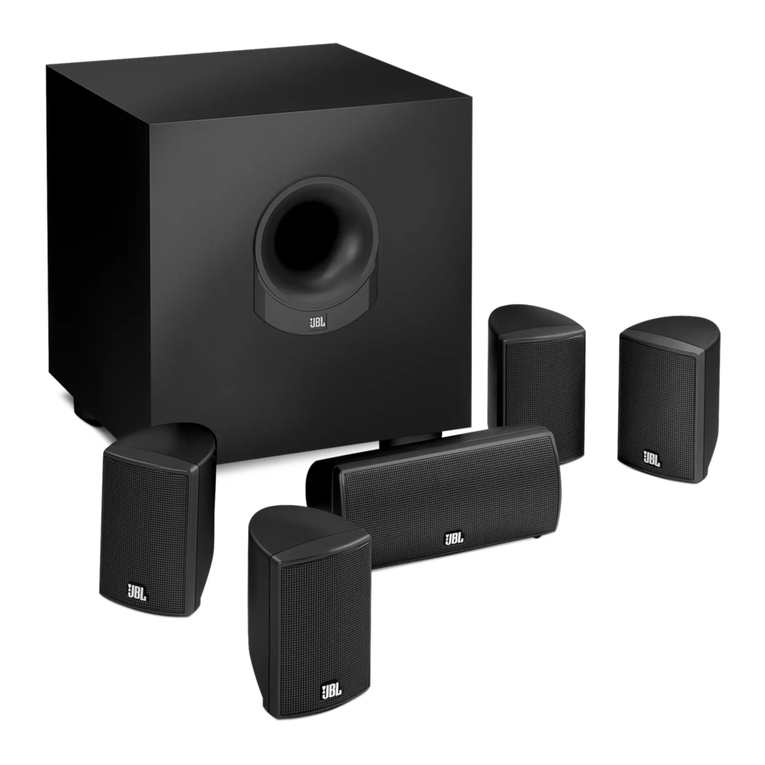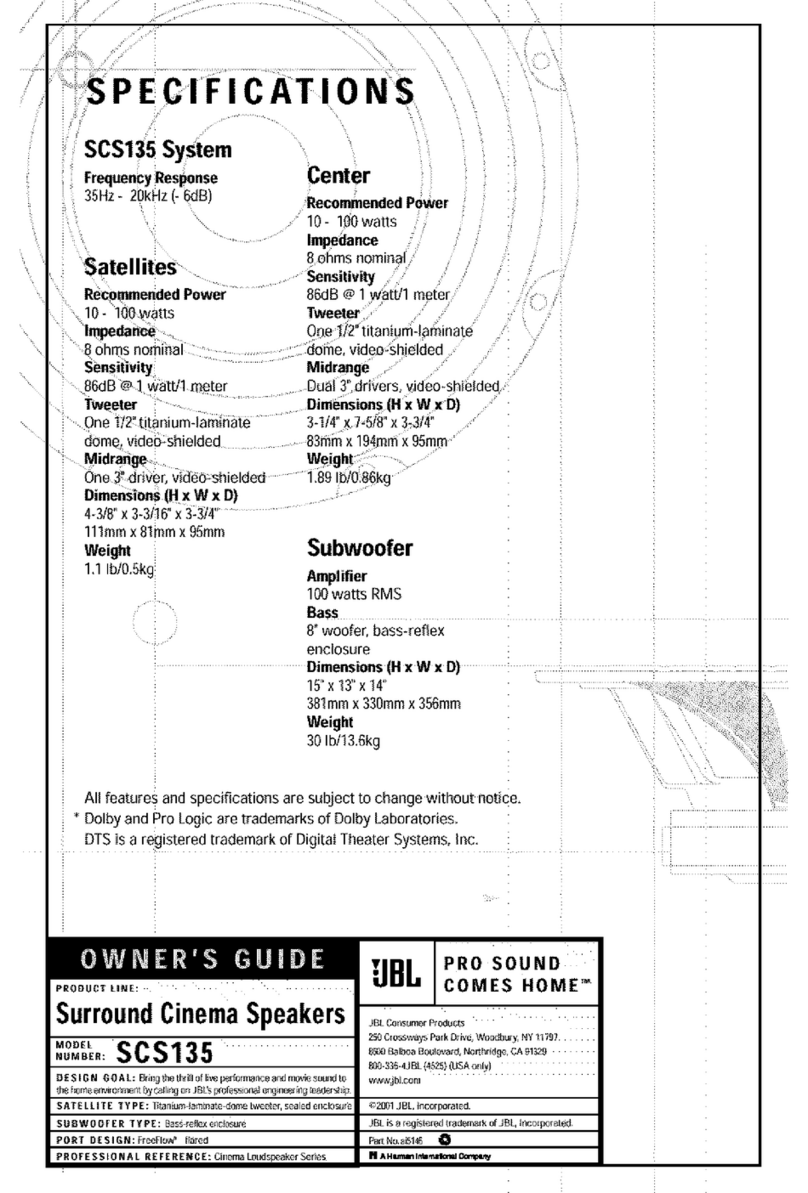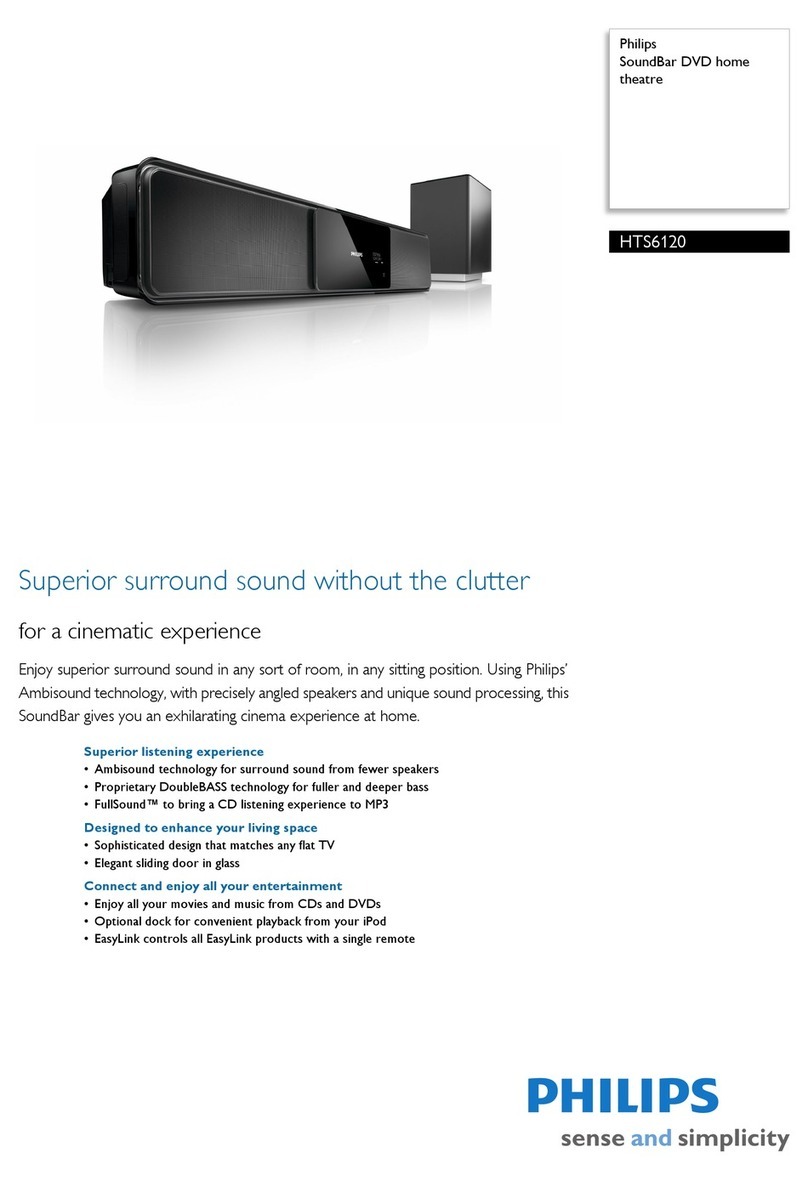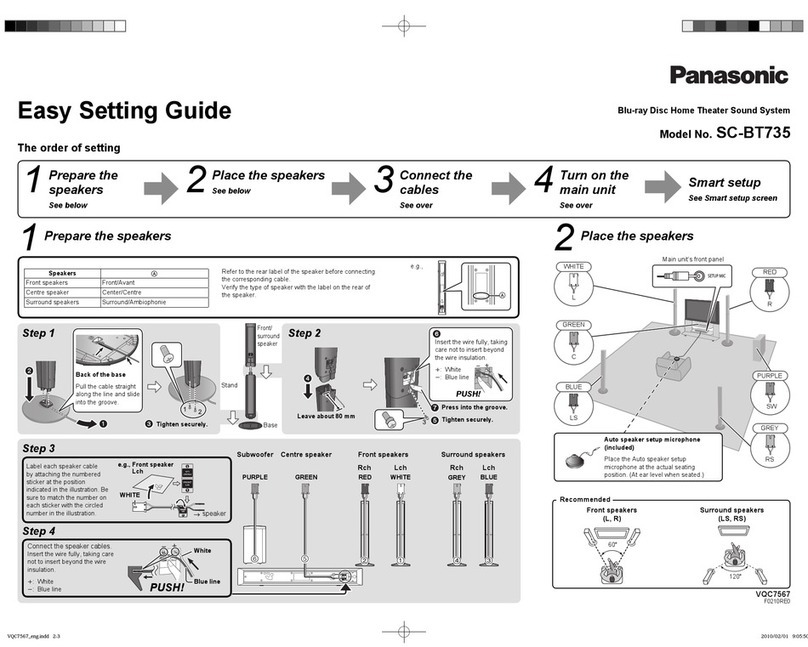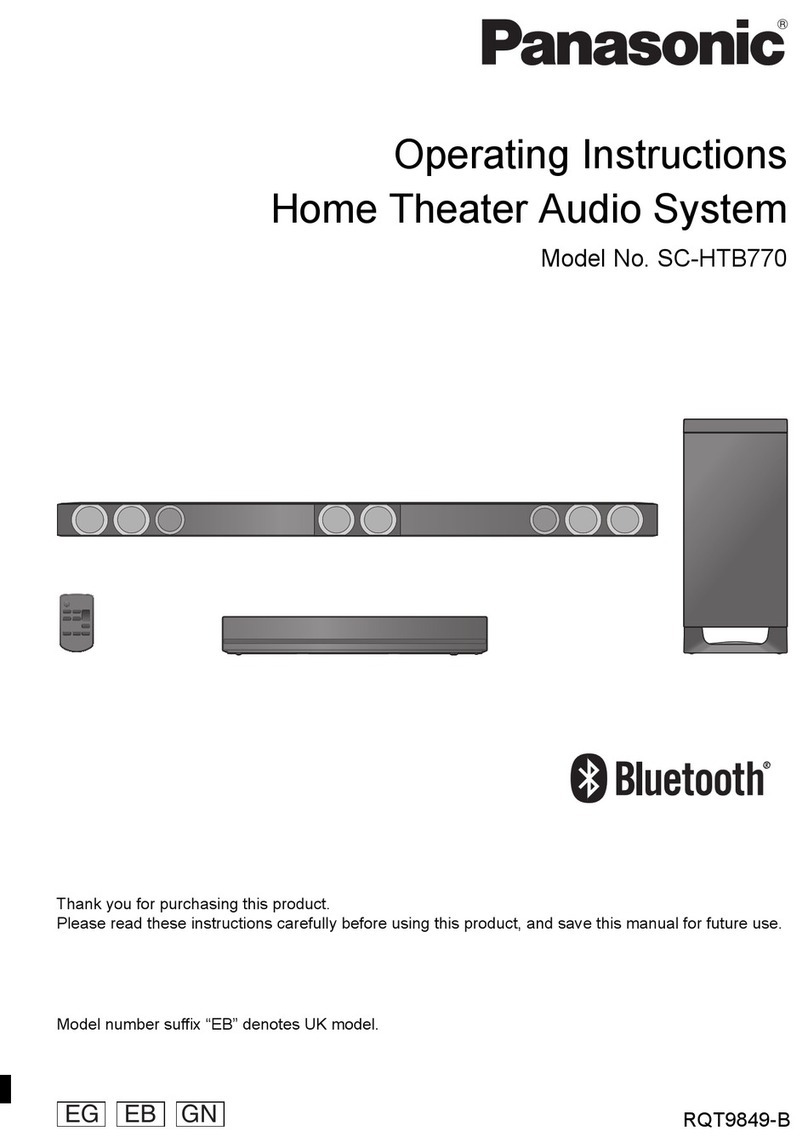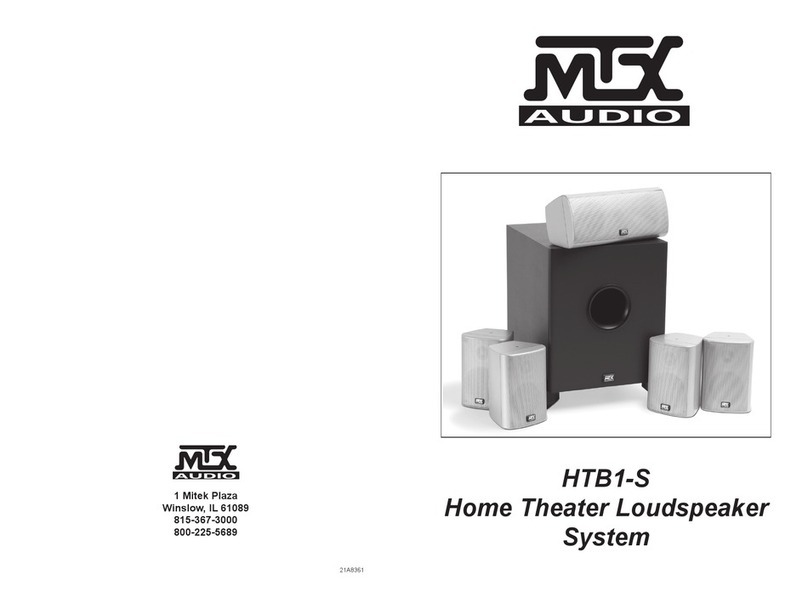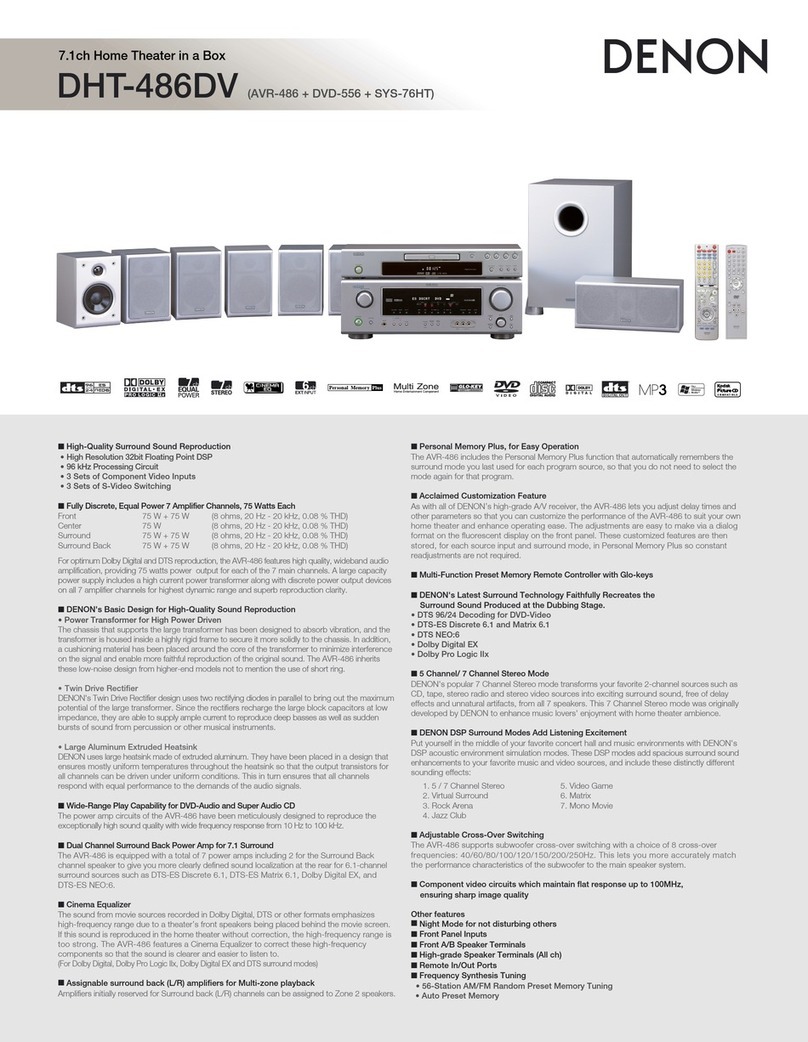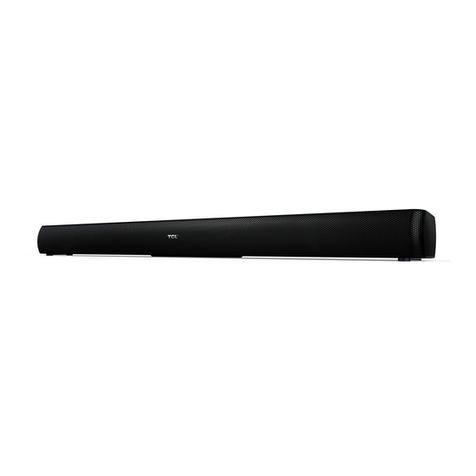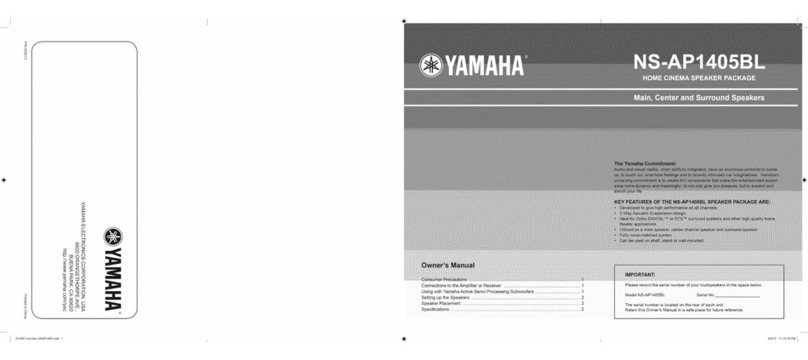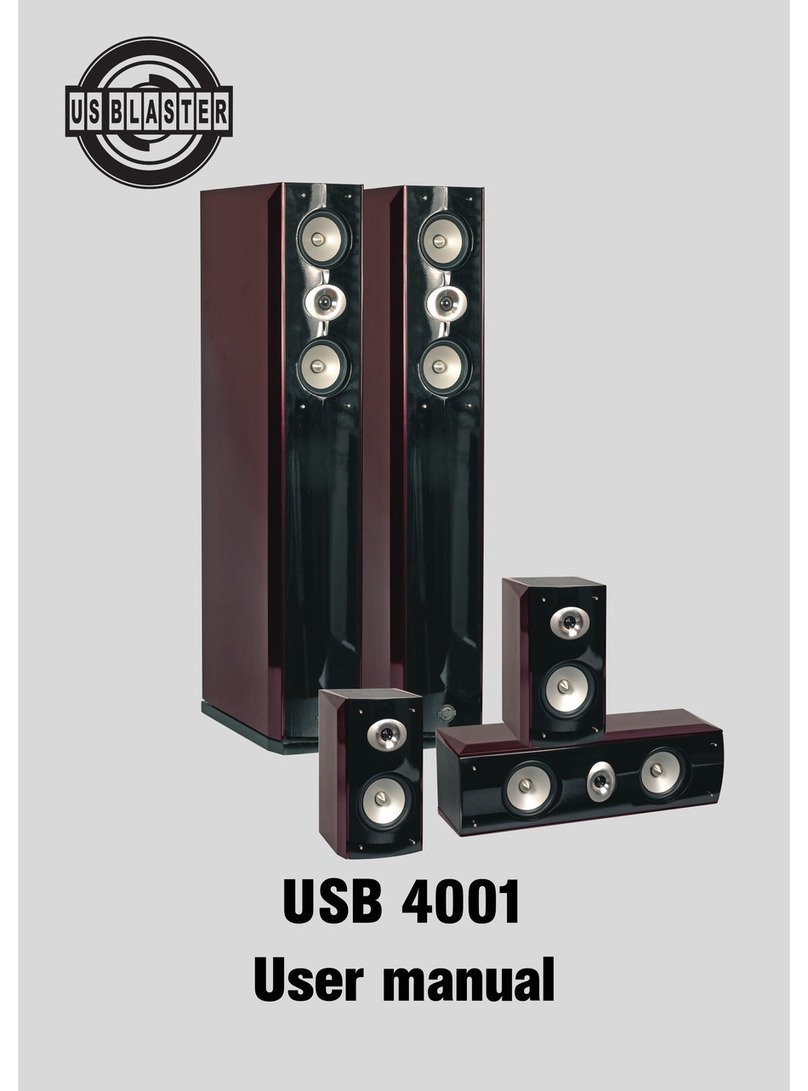10
If there is no sound from any
of the speakers:
•Check that receiver/ampli-
fier is on and a source is
playing.
•Check that the powered
subwoofer is plugged in,
and its
Power switch åis
switched on (“•”position).
•Check all wires and con-
nections between receiver/
amplifier and speakers.
Make sure all wires are con-
nected. Make sure none of
the speaker wires are
frayed, cut or punctured, or
touching each other.
•Review proper operation of
your receiver/amplifier.
If there is no sound coming
from one speaker:
•Check the “Balance” control
on your receiver/amplifier.
•Check all wires and con-
nections between receiver/
amplifier and speakers.
Make sure all wires are con-
nected. Make sure none of
the speaker wires are
frayed, cut or punctured, or
touching each other.
•In Dolby Digital or DTS
modes, make sure that the
receiver/processor is config-
ured so that the speaker in
question is enabled.
• Turn off all electronics
and switch the speaker in
question with one of the
other speakers that are
working correctly. Turn
everything back on, and
determine whether the
problem has followed the
speaker,or has remained
in the same channel. If the
problem is in the same
channel, the source of the
problem is most likely with
your receiver or amplifier,
and you should consult the
owner’s manual for that
product for further informa-
tion. If the problem has fol-
lowed the speaker, consult
your dealer for further assis-
tance or, if that is not possi-
ble, visit www.jbl.com.
If there is no sound from the
center speaker:
•Check all wires and con-
nections between receiver/
amplifier and speaker. Make
sure all wires are connected.
Make sure none of the
speaker wires are frayed,
cut or punctured, or touch-
ing each other.
•If your receiver/processor
is set in Dolby Pro Logic mode,
make sure the center speaker
is not in phantom mode.
•If your receiver/processor
is set in one of the Dolby
Digital or DTS
modes, make
sure the receiver/
processor
is configured so that the
center speaker is enabled.
If the system plays at low
volumes but shuts off as
volume is increased:
•Check all wires and con-
nections between receiver/
amplifier and speakers.
Make sure all wires are con-
nected. Make sure none of
the speaker wires are
frayed, cut or punctured, or
touching each other.
•If more than one pair of
main speakers is being used,
check the minimum imped-
ance requirements of your
receiver/amplifier.
If there is low (or no) bass
output:
•Make sure the connections
to the left and right “Speaker
Inputs” have the correct
polarity (+ and –).
•Make sure the subwoofer
is plugged into an active
electrical outlet
,and is
turned on (Power switch
åin the “•”position).
•In Dolby Digital or DTS
modes, make sure your
receiver/processor is config-
ured so that the subwoofer
and LFE output are enabled.
If there is no sound from
the surround speakers:
•Check all wires and con-
nections between receiver/
amplifier and speakers.
Make sure all wires are con-
nected. Make sure none of
the speaker wires are
frayed, cut or punctured, or
touching each other.
•Review proper operation of
your receiver/amplifier and
its surround sound features.
•Make sure the movie or
TV show you are watching
is recorded in a surround
sound mode. If it is not,
check to see whether your
receiver/amplifier has other
surround modes you may use.
•
In Dolby Digital or DTS
modes, make sure your
receiver/processor is config-
ured so that the surround
speakers are enabled.
•Review the operation of
your DVD player and the
jacket of your DVD to make
sure that the DVD features
the desired Dolby Digital or
DTS mode, and that you
have properly selected that
mode using both the DVD
player’smenu and the DVD
disc’smenu.
TROUBLESHOOTINGOPERATION
Move the Master Power switch
(marked “Power” å)to the “•”
(On) position to use the sub-
woofer. The SUB500 subwoofer
will automatically turn on or go
into standby (sleep) mode
when left in the auto mode
(“Auto/On” switch çin the
“Auto” position). When your
receiver or amplifier is off, or is
not sending program material
to the subwoofer, the sub-
woofer will be in standby mode
(LED will be red). When the
sub
woofer senses an audio sig-
nal,
it will automatically turn on
(LED will be green). If the sub-
woofer does not sense a signal
after
approximately 20 minutes,
it will automatically go into
standby mode.
When the “Auto/On” switch ç
is switched to the “On” posi-
tion, the subwoofer will remain
on, whether or not program
material is playing.
If you will be away from home
for an extended period of time,
or if the subwoofer will not be
used, switch the Master Power
switch åto the Off position.
VOLUME
